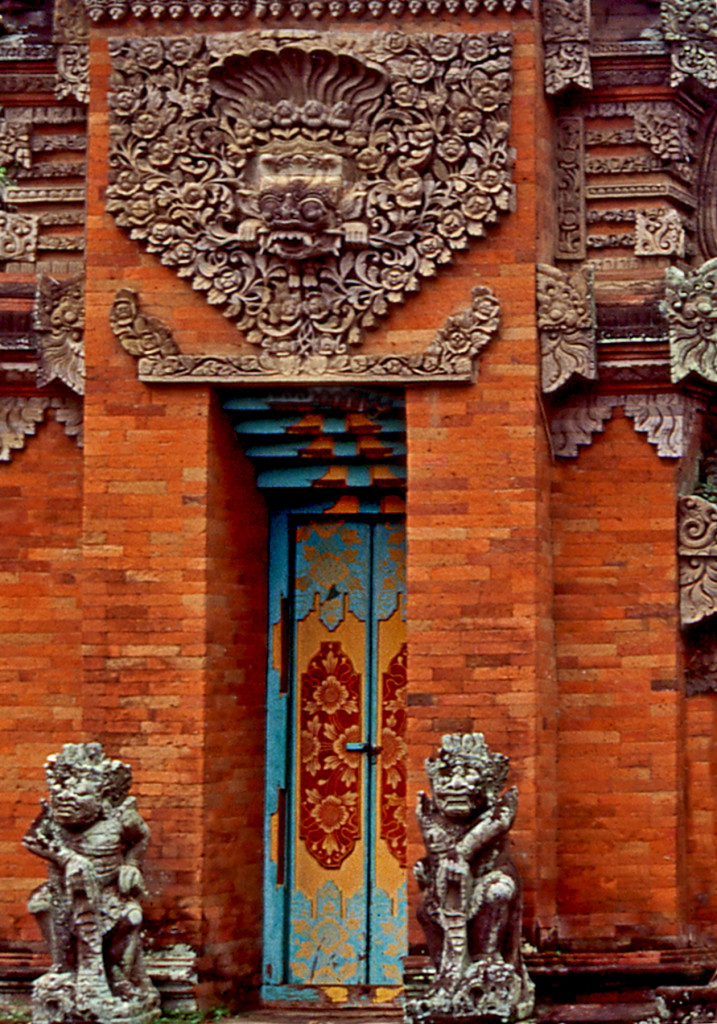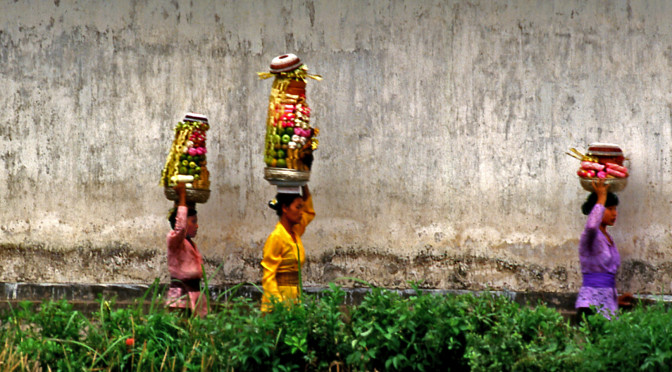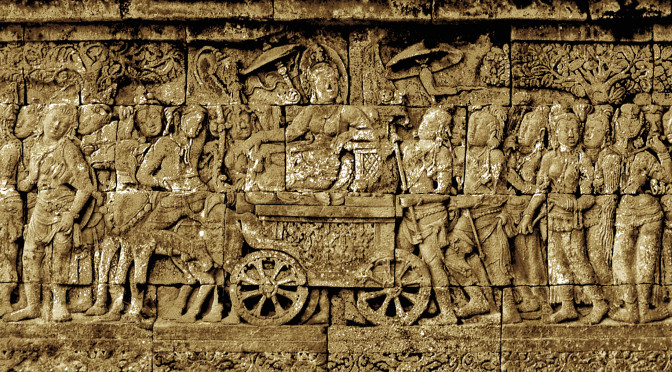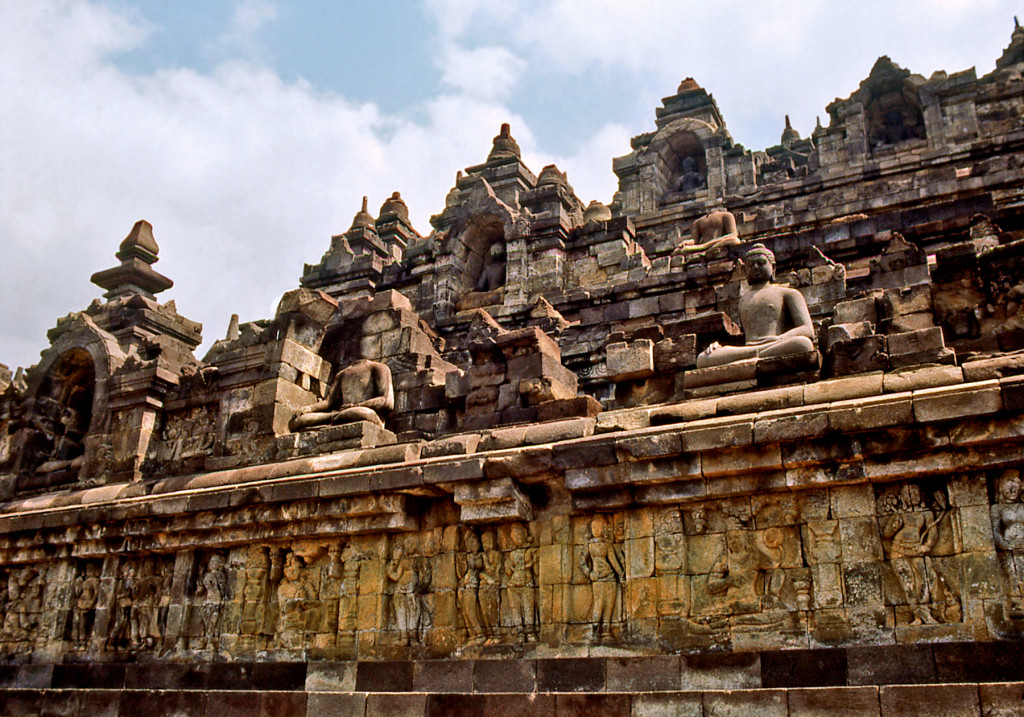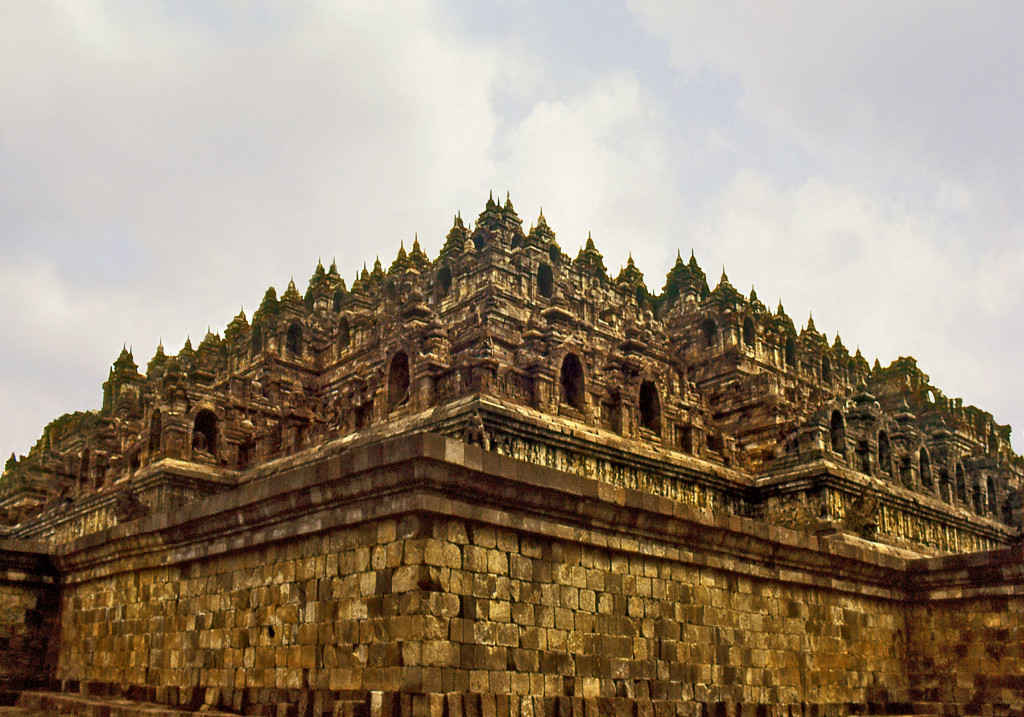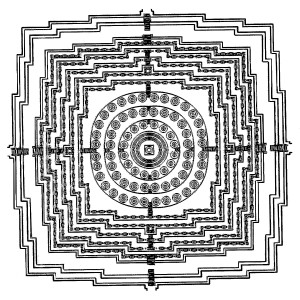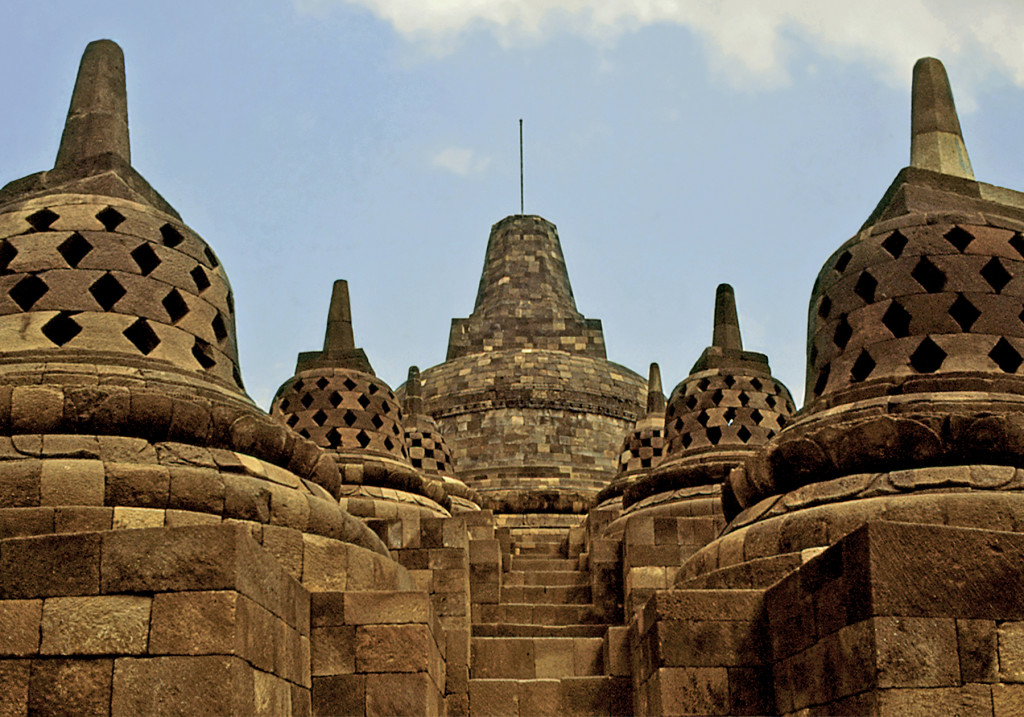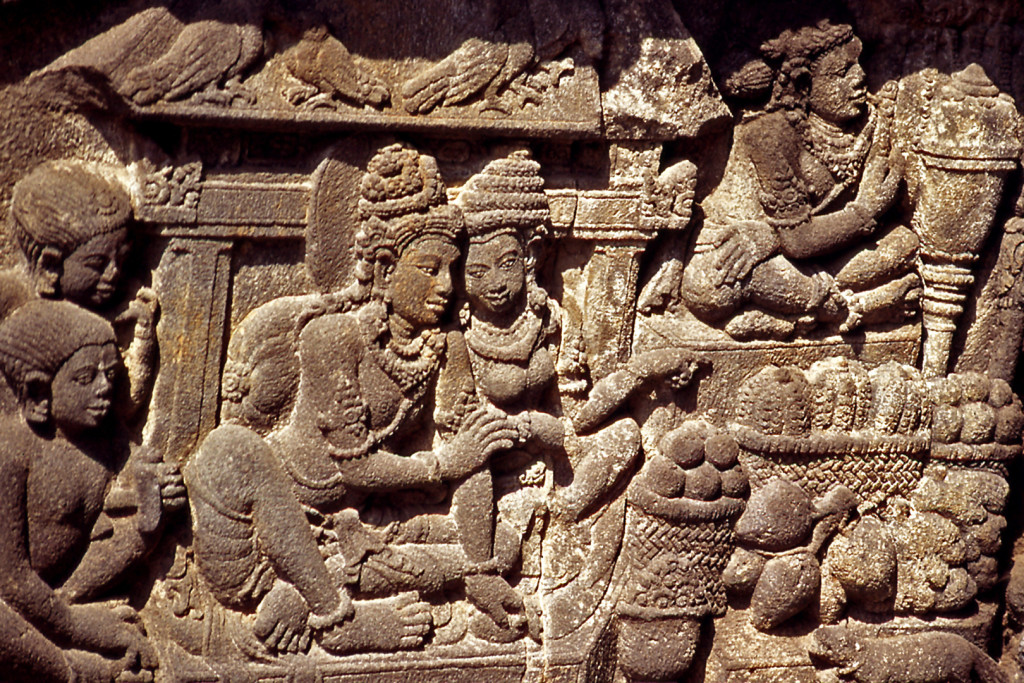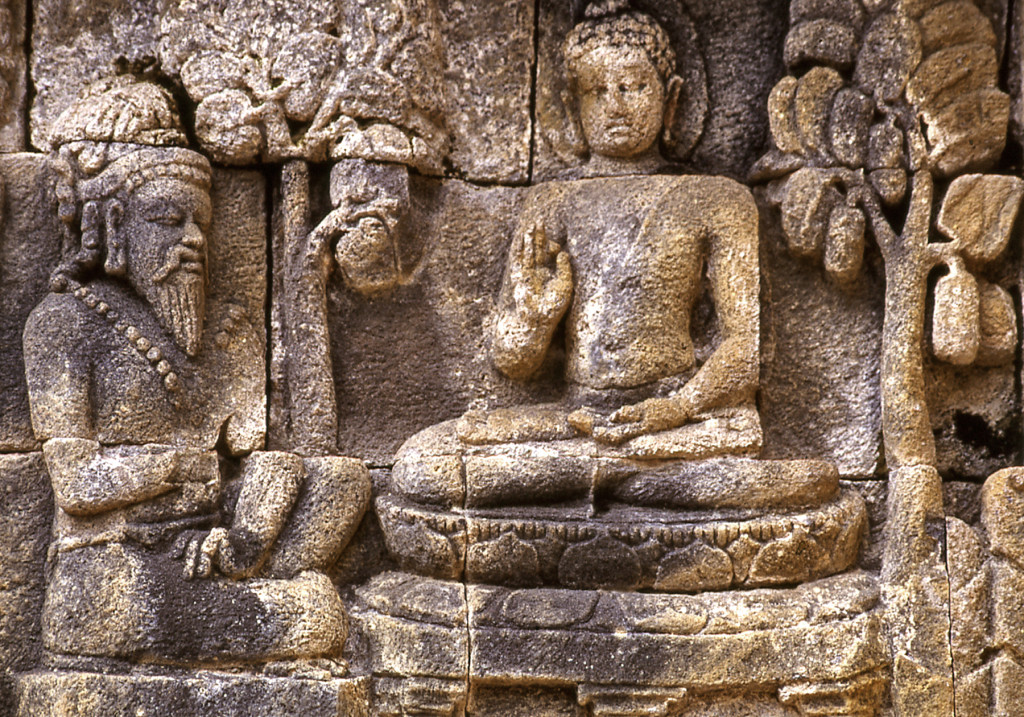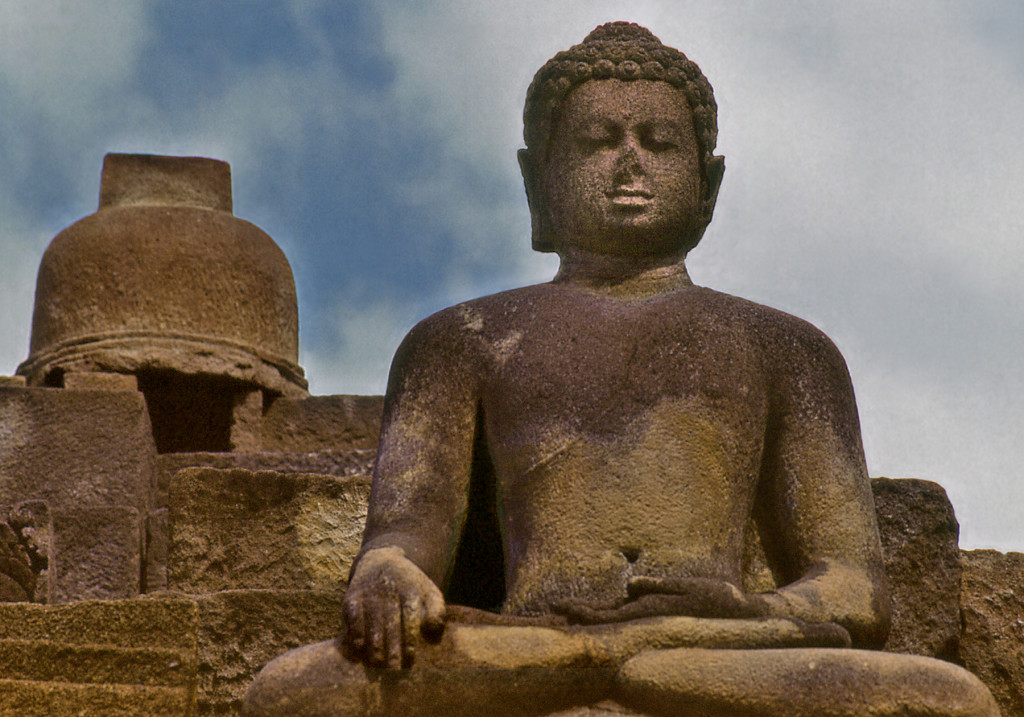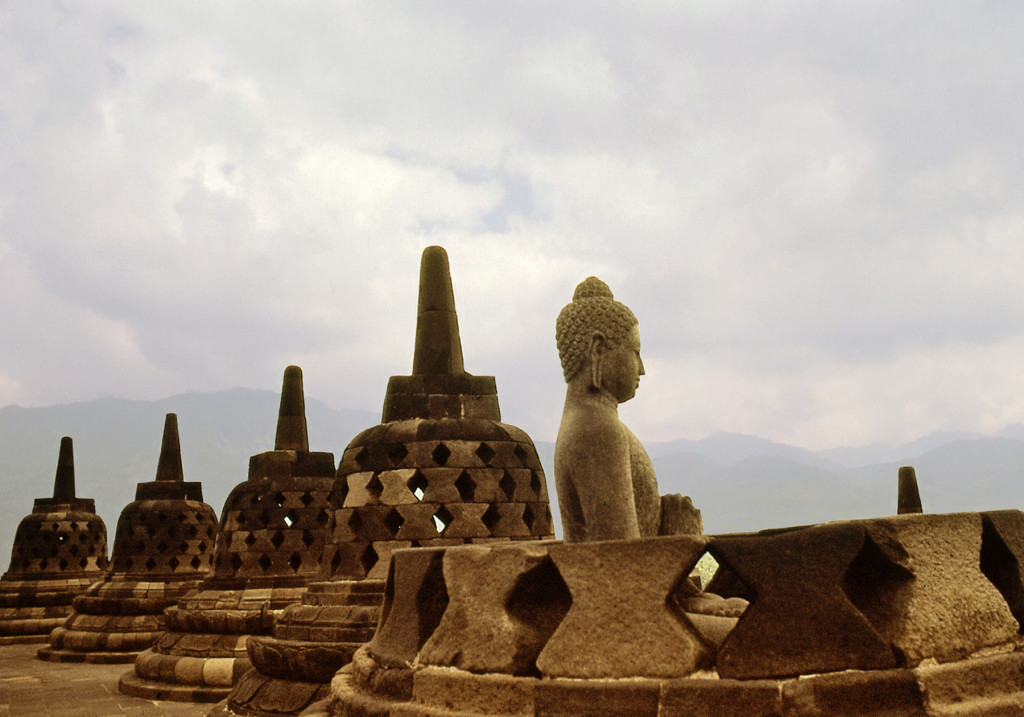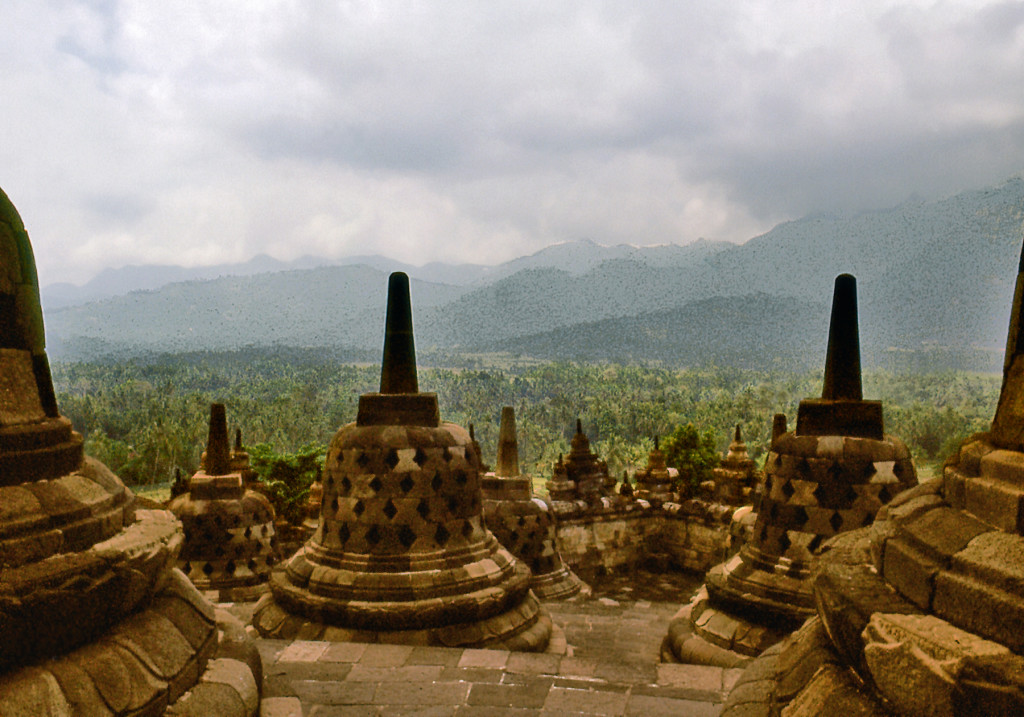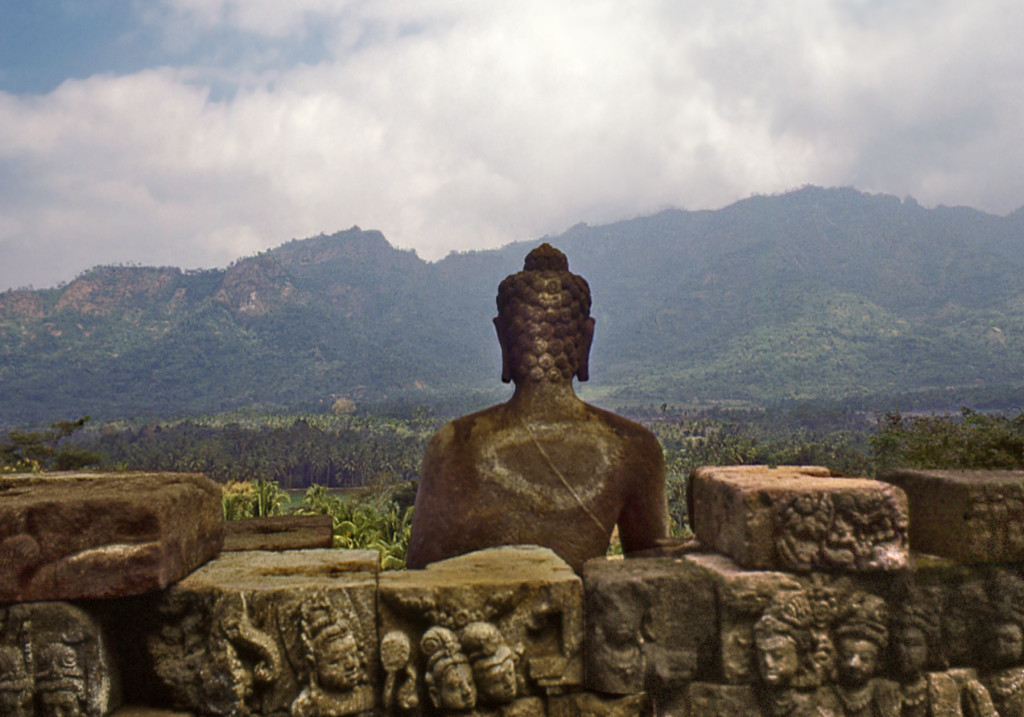The beautiful tropical island of Bali boasts a rich and complex culture belying its small size. For centuries Bali was culturally and politically linked to neighboring Java, home to a powerful maritime empire influential throughout Southeast Asia. After the spread of Islam to the Indonesian archipelago in the 16th century, the Hindu aristocracy of Java with its priests, scholars, artists, dancers and musicians fled to the secluded sanctuary of Bali, adding to the small island’s cultural heritage. Today Bali is the last stronghold of Hinduism in Indonesia. Balinese Hinduism is a fascinating mixture of adopted Indian philosophy and rituals overlaid upon the island’s indigenous animism with its ancestor worship and magical practices. In Balinese cosmology spirits are everywhere, and their propitiation through daily offerings and rituals maintains the cosmic order and the balance between good and evil forces. The famous Balinese dance dramas depict this mythic world of gods and nature spirits, with their flower bedecked and gorgeously costumed dancers gracefully gesturing to the hypnotic music of the gamelan.
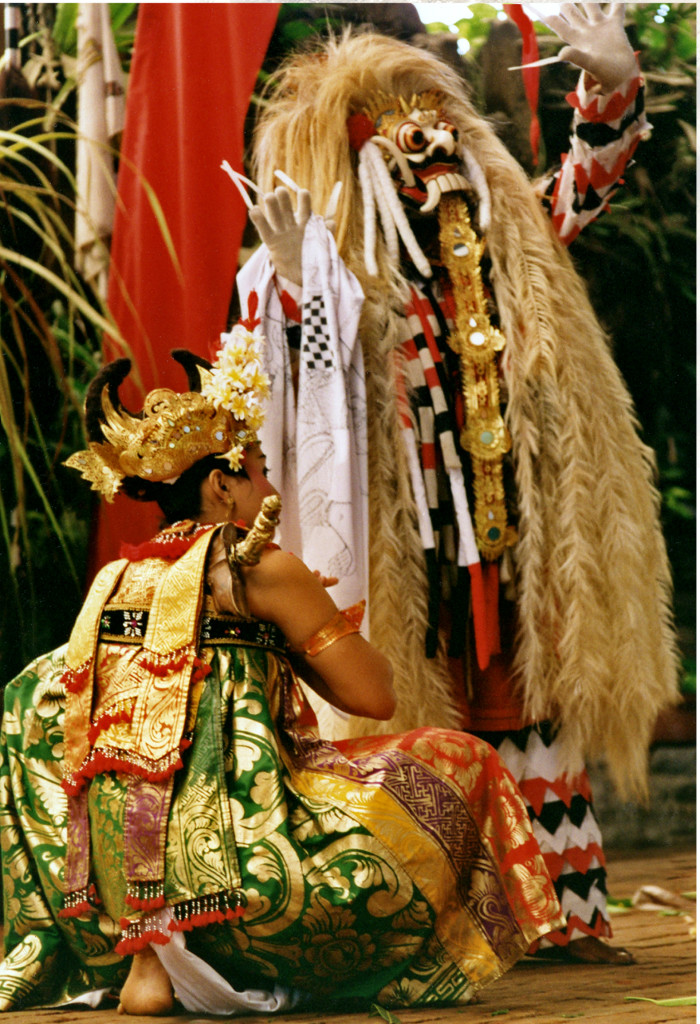

The range of towering volcanoes at the center of the island is con-sidered to be the realm of the gods, with Gunung Agung, the highest mist shrouded peak being the home of Shiva. Perched on its slopes is Pura Besakih, Bali’s most sacred “Mother Temple” originally dating from the 14th century. It consists of a series of courtyards connected by steep stairways, each containing multi-roofed thatched shrines resembling pagodas. They are called “meru” harking to the Hindu mythical mountain at the center of the universe. Temple courtyards also function as performance spaces for sacred music and dance. They are entered through unusual split gateways with no top lintels and each side ending in a pointed wing-like projection. As the place of transition between secular and sacred space, temple doorways are decorated with protector masks and flanked by guardian figures.
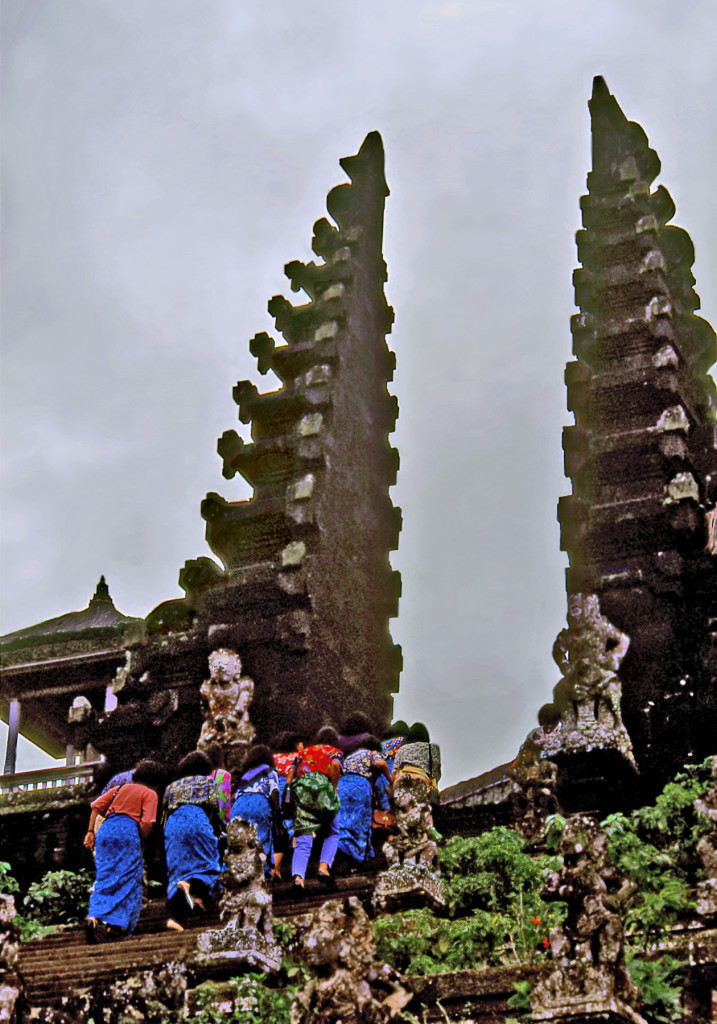
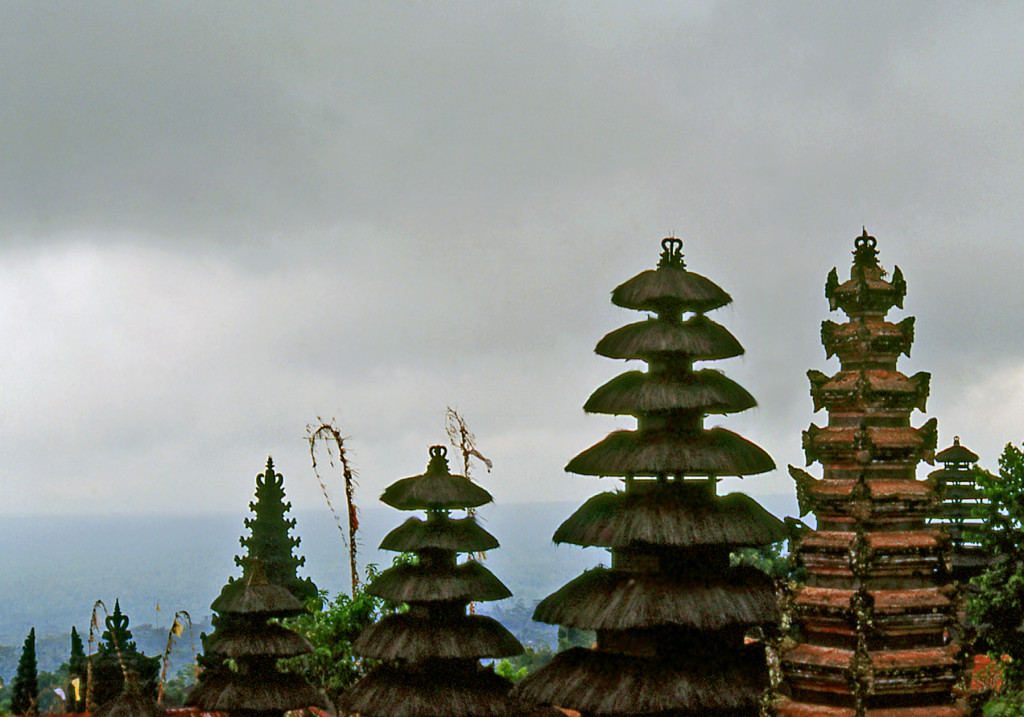
Balinese art is imbued with a baroque sensibility inspired by the exuberant tropical environment. The cave of Goa Gajah dates from ca. 1,000 CE. The side of a low hill has been carved with intertwined plants, animals and decorative scrolls which seem to move and writhe as they emerge from the dark depths of the earth, bursting forth in astonishing profusion. They surround a giant stone face whose mouth forms the entrance to a small natural cave. The face is said to represent Bhoma (born of the earth) the son of Vishnu, ruler of the waters, and the earth goddess whose union ensures the fertility of the soil and brings forth vegetation. Nearby is a ritual bathing pool fed by natural springs and decorated with statues of women holding pots from which the water pours into the pool. Thus cave and pool symbolically represent the importance of water in Balinese life.
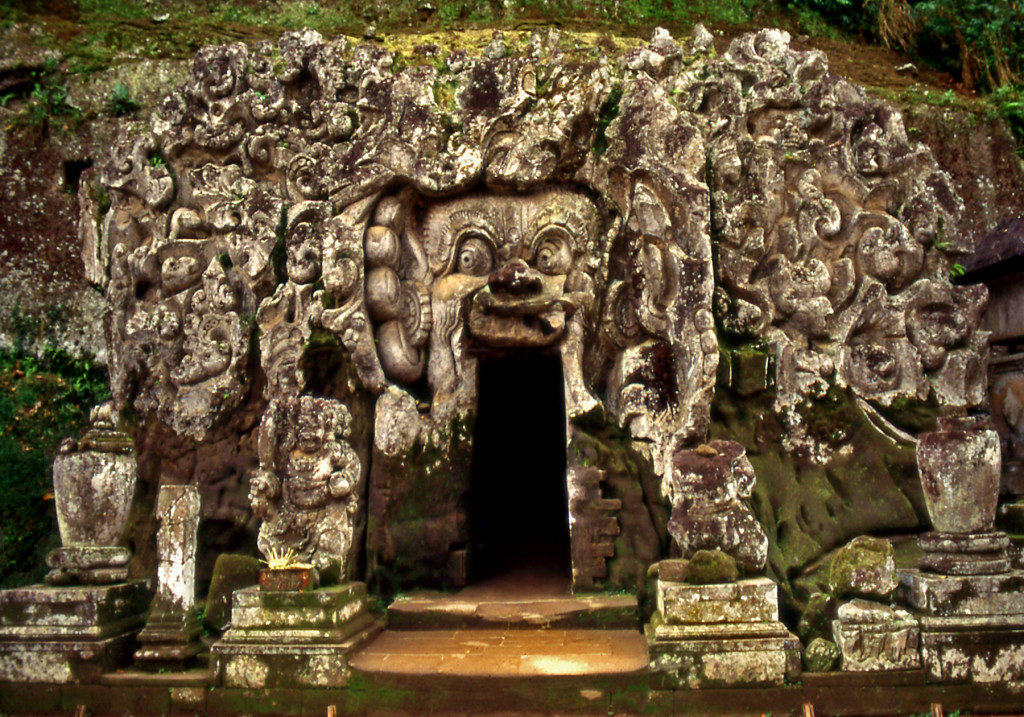
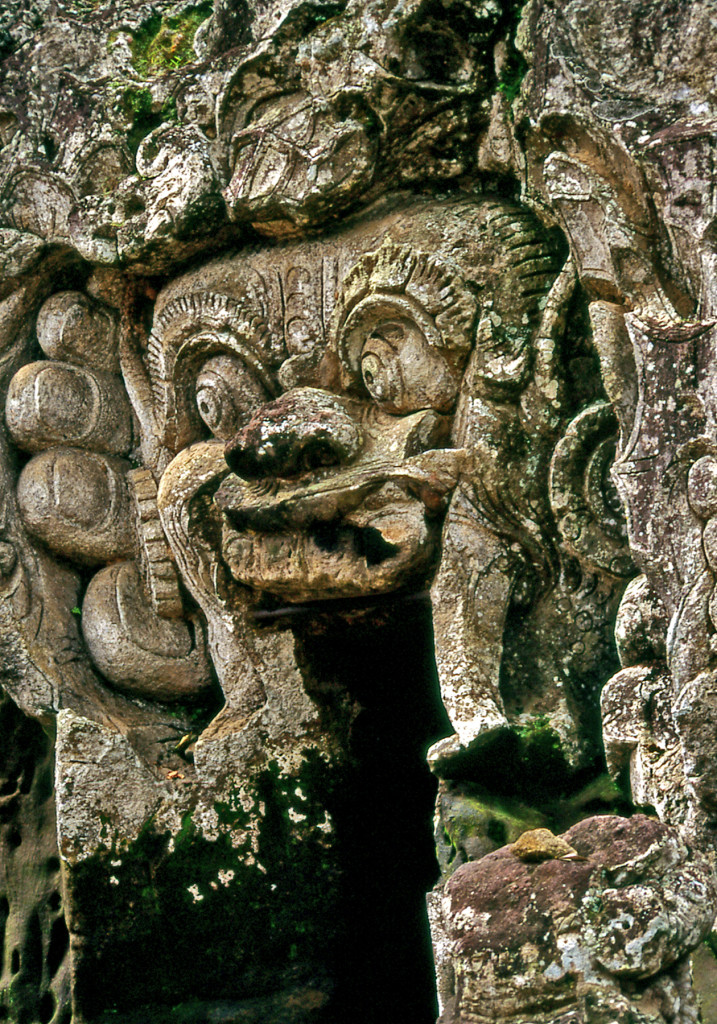
The spectacular contoured rice terraces that blanket the hillsides of the central highlands depend on an elaborate irrigation system, one of the oldest in continuous use in the world. Water from streams and mountain lakes has been diverted into aqueducts and channels that are maintained through communal work and rituals tied to the social and religious organization of the surrounding farming villages.
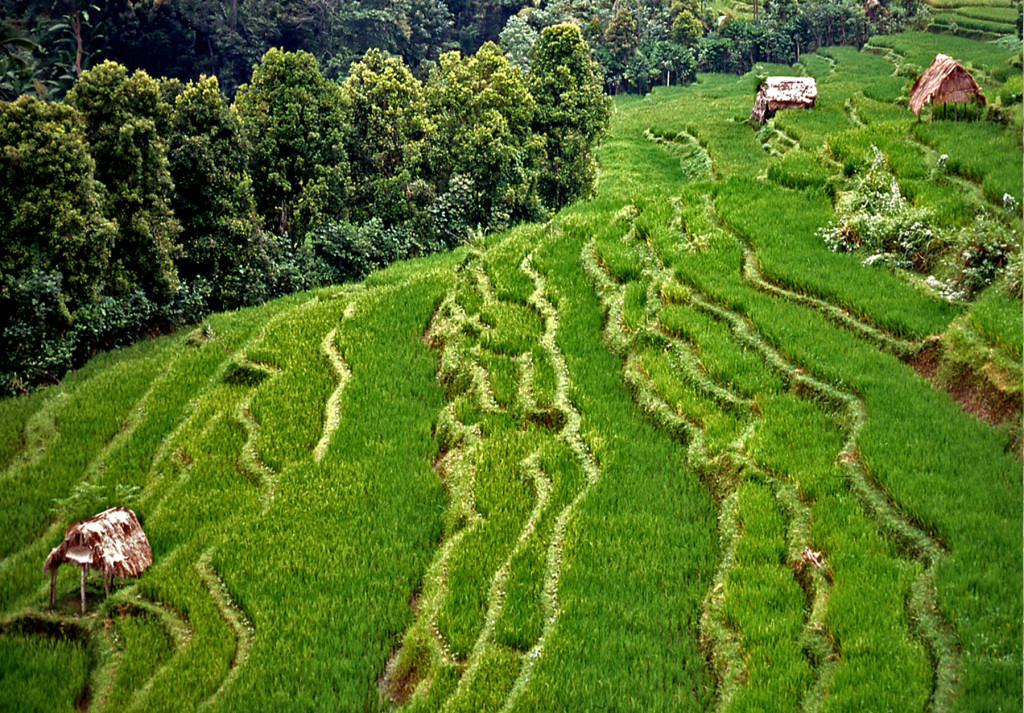
The town of Ubud in the central highlands is the cultural heart of the island. Away from the tourist traffic of the beach resorts, it is still possible to experience the unique integration of nature and culture that is traditional Bali: a verdant landscape animated by the spirits of forests, waters and mountains kept in ecological and spiritual balance by the power of rituals and the beauty of art.
